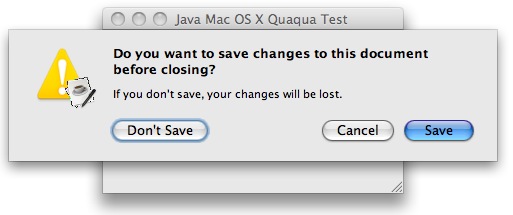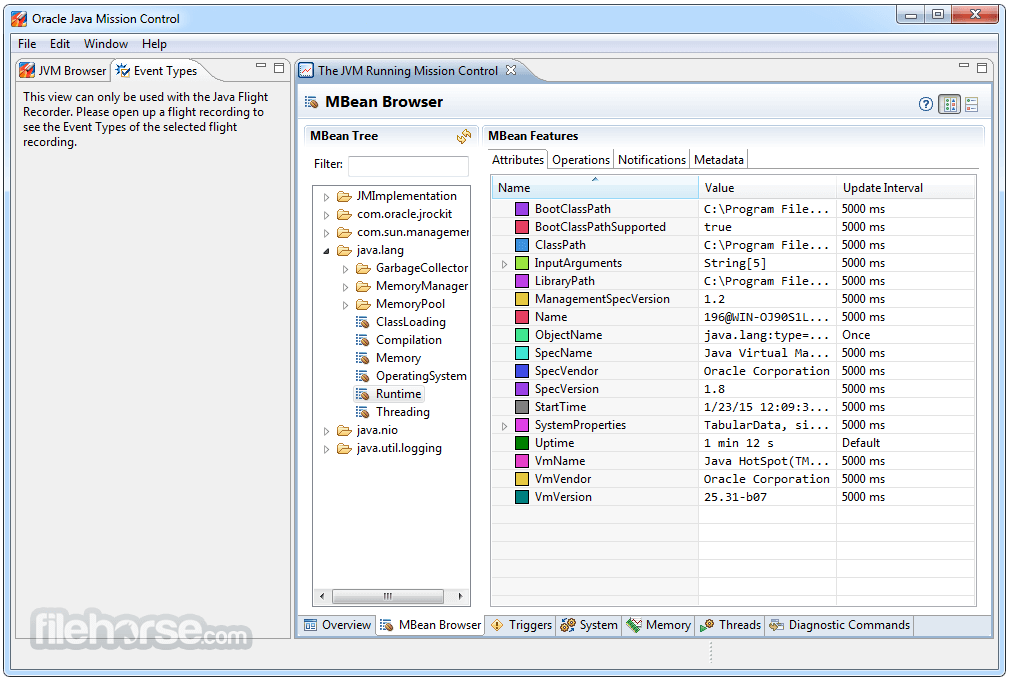- Java Desktop Application For Mac
- Java Coding App For Mac
- Java Jdk For Mac
- Java Uninstall Tool For Mac
- Java Decompiler Tool For Mac
- Java Tool For Memory
- JUnit: JUnitis an open source unit testing tool for Java programming language.
- Some applications use /usr/bin/java to call Java. After installing Java for macOS 2012-006, /usr/bin/java will find the newest JDK installed, and will use that for all of the Java-related command-line tools in /usr/bin. You may need to modify those applications to find Java 6, or contact the developer for a newer version of the application.
RefactorIT is a new Java refactoring tool that's been customized for Mac usage and 'works nicely' on Mac OS X, the application's author, Oliver Wihler, told MacCentral. Download JDK for Mac - Open source and cross-platform development toolkit designed by Oracle for building multi-platform Java based applications and applets SOFTPEDIA® Windows. Download Java Tools For Mac for free. Code and utilities for doing mac-specific development in Java. This will include bridges for spotlight and quiclook (written in C) that will invoke Java class.
This topic includes the following sections:
System Requirements for Installing the JDK on macOS
The following are the system requirements for installing the JDK on macOS:
Any Intel-based computer running macOS.
Administrator privileges.
You cannot install Java for a single user. Installing the JDK on macOS is performed on a systemwide basis for all users. Administrator privileges are required to install the JDK on macOS.
Determining the Default JDK Version on macOS

When starting a Java application through the command line, the system uses the default JDK.
You can determine which version of the JDK is the default by entering java -version in a Terminal window. If the installed version is 13 Interim 0, Update 0, and Patch 0, then you see a string that includes the text 13. For example:
To run a different version of Java, either specify the full path, or use the java_home tool. For example:
$ /usr/libexec/java_home -v 13 --exec javac -version
Installing the JDK on macOS
- Download the JDK
.dmgfile,jdk-13.interim.update.patch_osx-x64_bin.dmg.Before the file can be downloaded, you must accept the license agreement.
- From either the browser Downloads window or from the file browser, double-click the
.dmgfile to start it.A Finder window appears that contains an icon of an open box and the name of the.pkgfile. - Double-click the
JDK 13.pkgicon to start the installation application.The installation application displays the Introduction window. - Click Continue.
- Click Install. A window appears that displays the message: Installer is trying to install new software. Enter your password to allow this.
- Enter the Administrator user name and password and click Install Software.The software is installed and a confirmation window is displayed.
.dmg file if you want to save disk space. Uninstalling the JDK on macOS
You must have Administrator privileges.Note:
Do not attempt to uninstall Java by removing the Java tools from /usr/bin. This directory is part of the system software and any changes will be reset by Apple the next time that you perform an update of the OS.
- Go to
/Library/Java/JavaVirtualMachines. - Remove the directory whose name matches the following format by executing the
rmcommand as a root user or by using thesudotool:/Library/Java/JavaVirtualMachines/jdk-13.interim.update.patch.jdkFor example, to uninstall 13 Interim 0 Update 0 Patch 0:
$ rm -rf jdk-13.jdk
Installation FAQ on macOS Platform
This topic provides answers for the following frequently asked questions about installing JDK on macOS computers.
Java Desktop Application For Mac
1. How do I find out which version of Java is the system default?
When you run a Java application from the command line, it uses the default JDK. If you do not develop Java applications, then you do not need to worry about this. See Determining the Default JDK Version on macOS.
2. How do I uninstall Java?
See Uninstalling the JDK on macOS.
3. After installing Java for macOS 2012-006, can I continue to use Apple's Java 6 alongside the macOS JDK for Java 13?
If you want to continue to develop with Java 6 using command-line, then you can modify the startup script for your favorite command environment. For bash, use this:
$ export JAVA_HOME=`/usr/libexec/java_home -v 13`
Some applications use /usr/bin/java to call Java. After installing Java for macOS 2012-006, /usr/bin/java will find the newest JDK installed, and will use that for all of the Java-related command-line tools in /usr/bin. You may need to modify those applications to find Java 6, or contact the developer for a newer version of the application.
4. What happened to the Java Preferences app in Application Utilities?
The Java Preferences app was part of the Apple Java installation and is not used by Oracle Java. Therefore, macOS releases from Apple that do not include Apple Java will not include Java Preferences.
Last updated on February 17th, 2018


The following pop up message is displayed randomly on a Macbook Pro: 'To use the java command line tool you need to install a JDK. Click 'More info…' to visit the Java Developer kit download website'.
Java Coding App For Mac
The error is received because an installed application needs Java to run properly, but in newer versions of OS X, the Java support has been removed for security reasons.
This tutorial contains instructions to fix the following problem on MAC OS X: 'To use the 'java' command-line tool you need to install a JDK'
How to FIX: JAVA command line tools needs JDK (Mac OS X).
Java Jdk For Mac
Step 1. Delete 'facebook.videochat.xxx.plist file
1. Using Finder click Go to Folder
2. At the search box type: ~/Library/LaunchAgents/
3. Right-click at the 'com.facebook.videochat.USERNAME.plist'* and select Move to Trash *
* Note: If you cannot find the 'com.facebook.videochat.USERNAME.plist' file then continue to the next step.
4. Then Empty Trash.
5.Restart you MAC and your problem should be gone. *
* Note: If the problems persists then continue to the next step.
Step 2. Download and install JAVA.

1. Download JAVA from the following website:
Java Uninstall Tool For Mac
2. When the download is completed, open the .dmg file and install Java 6 runtime for MAC OS X.
3. When the installation is completed, restart your MAC.
Java Decompiler Tool For Mac
That's it! Let me know if this guide has helped you by leaving your comment about your experience. Please like and share this guide to help others.
Java Tool For Memory
Full household PC Protection - Protect up to 3 PCs with NEW Malwarebytes Anti-Malware Premium!
